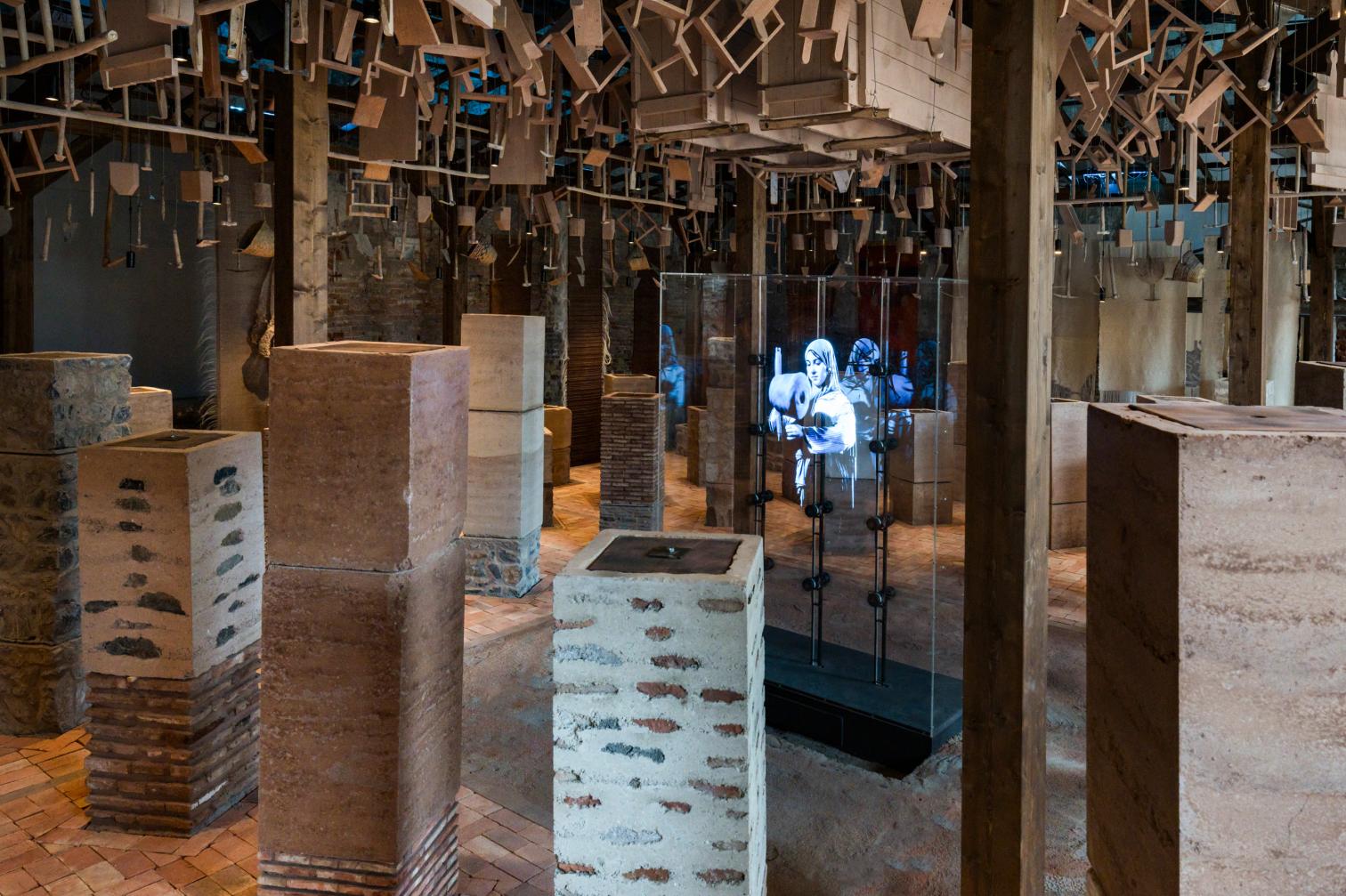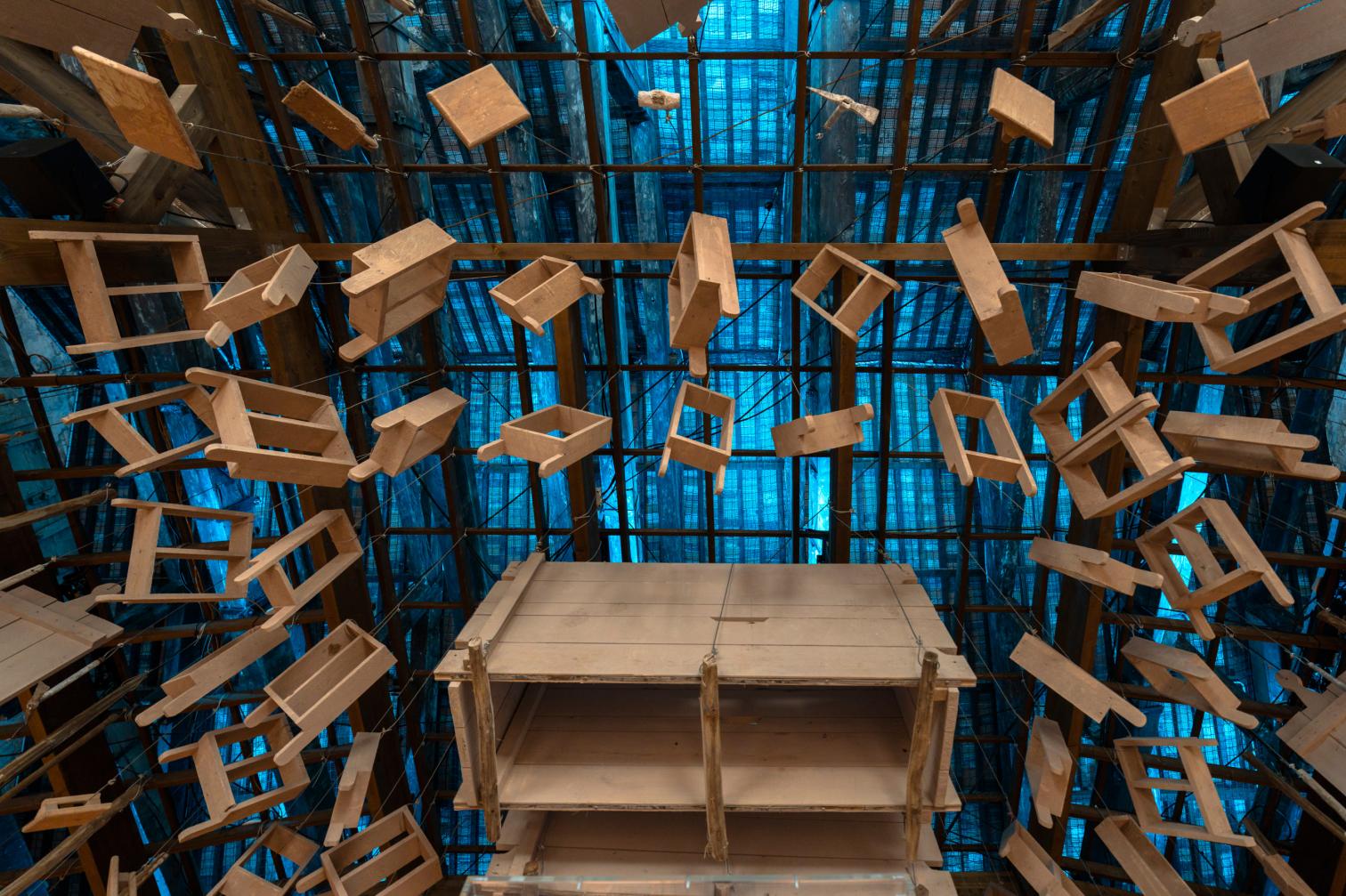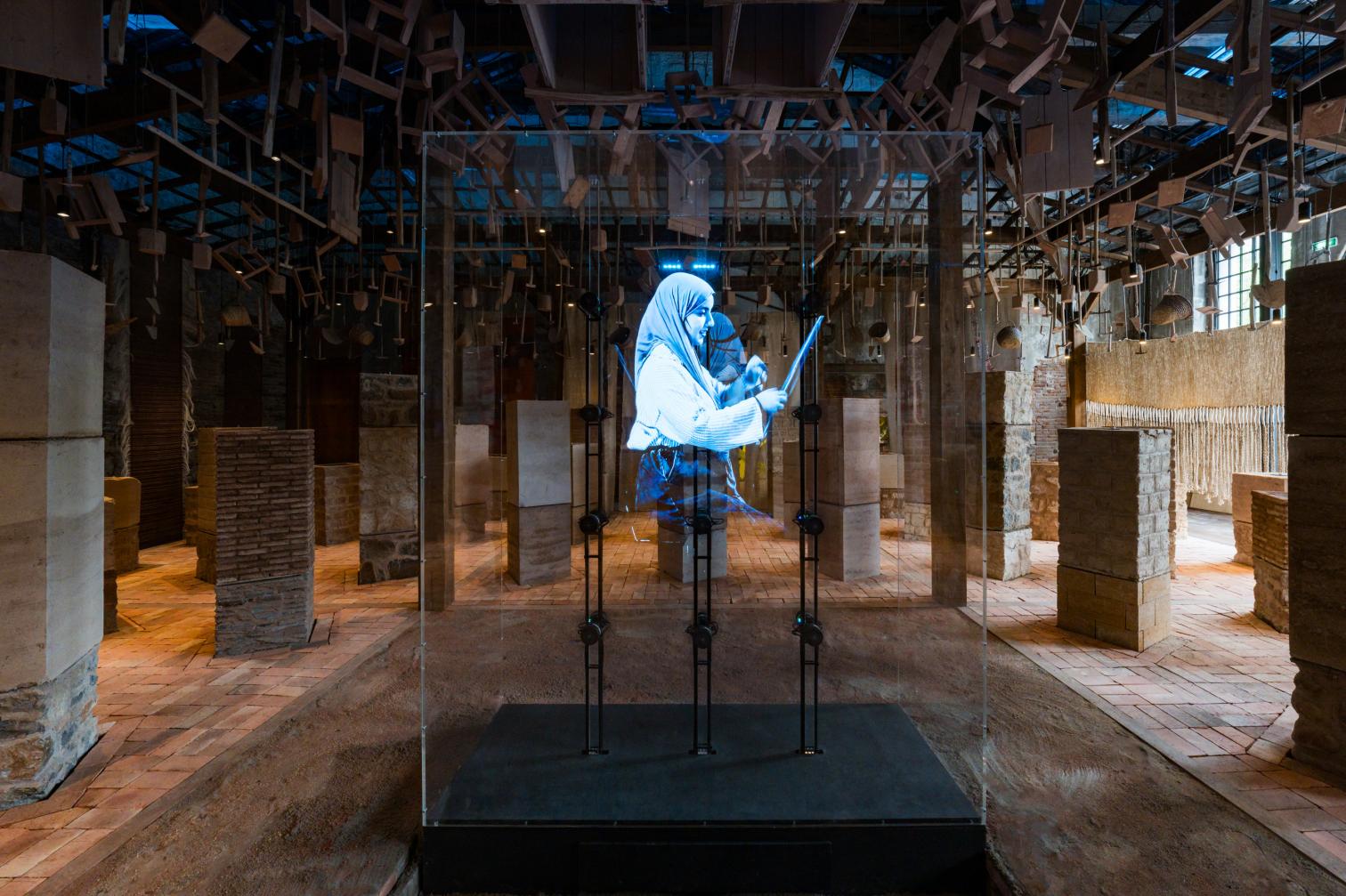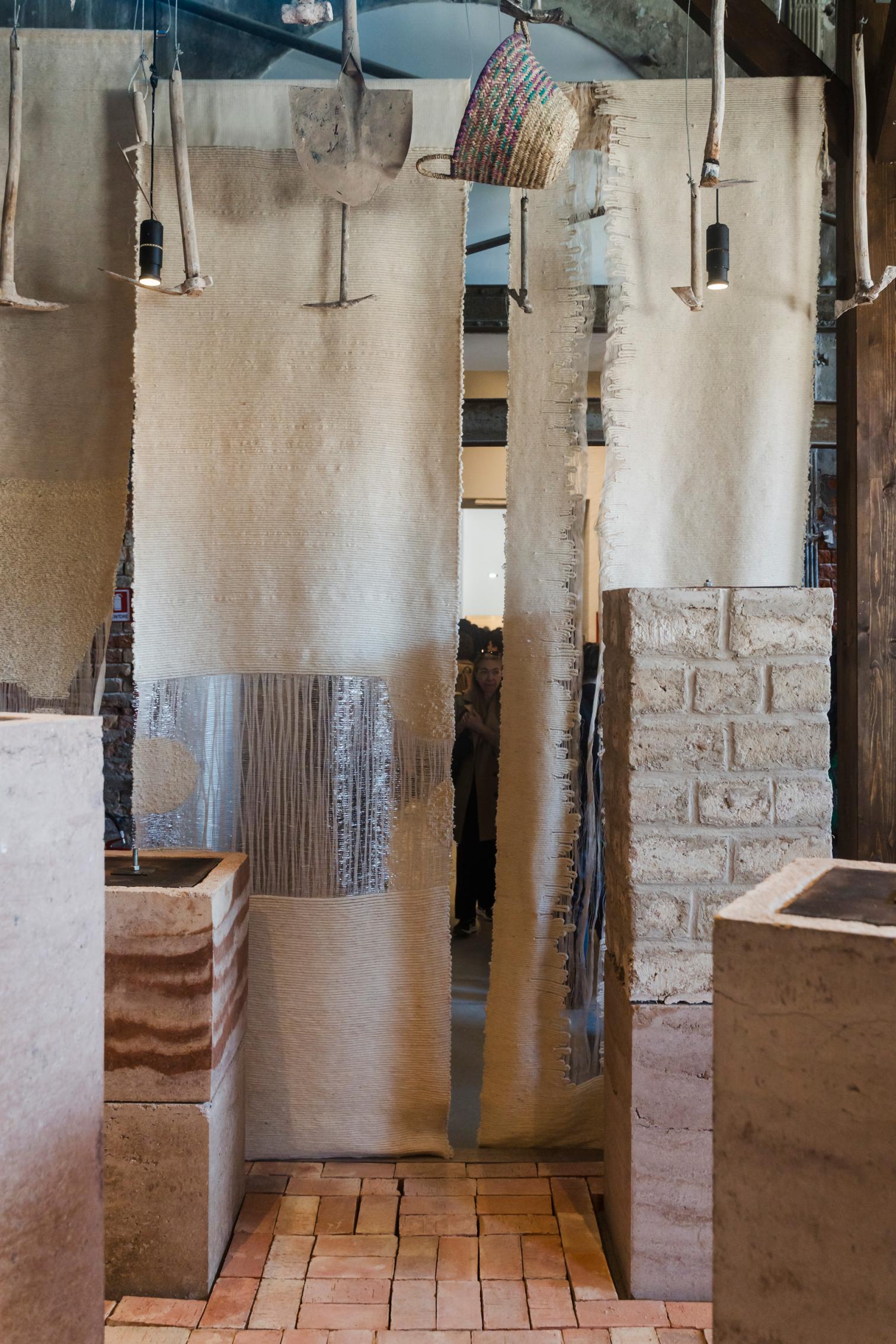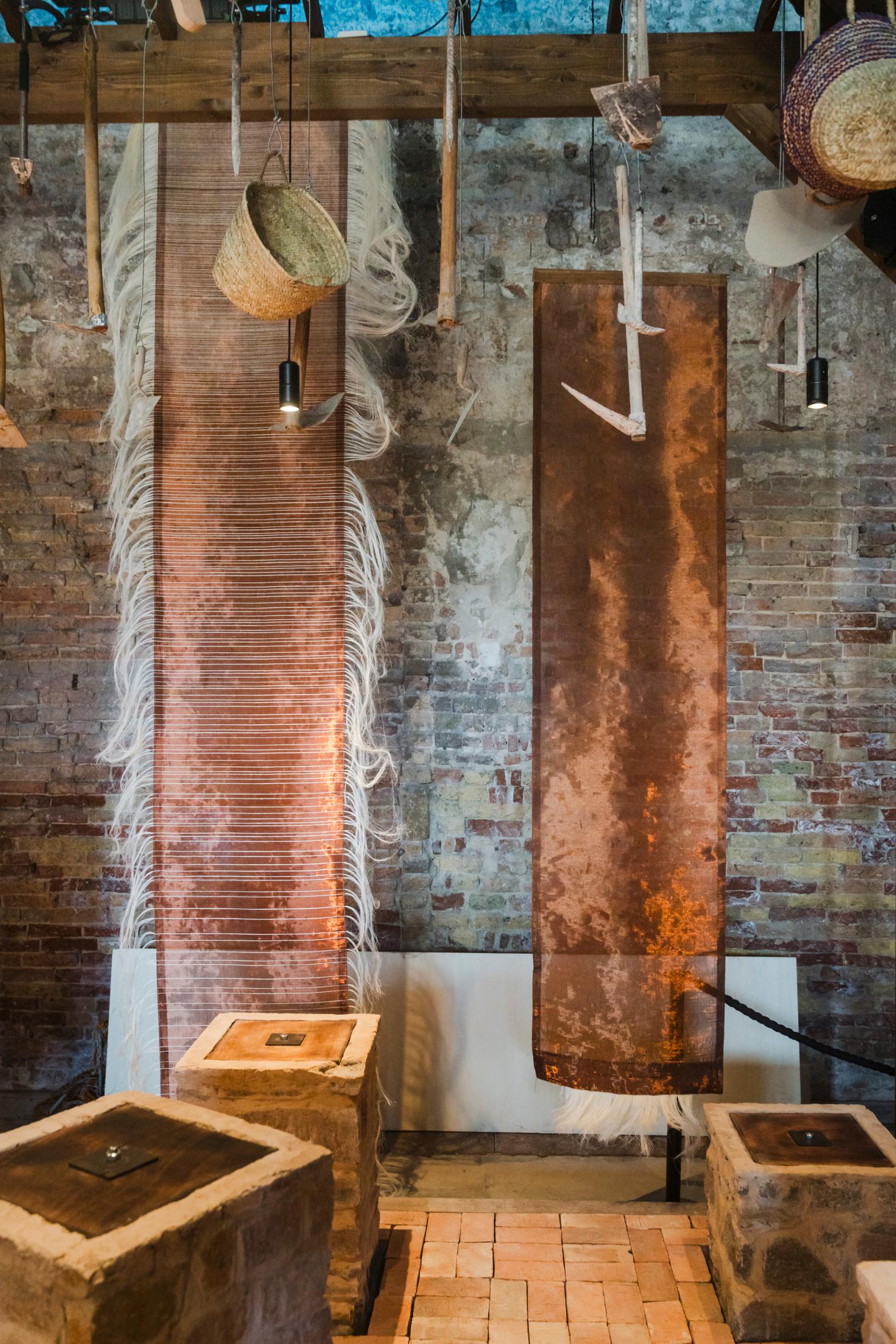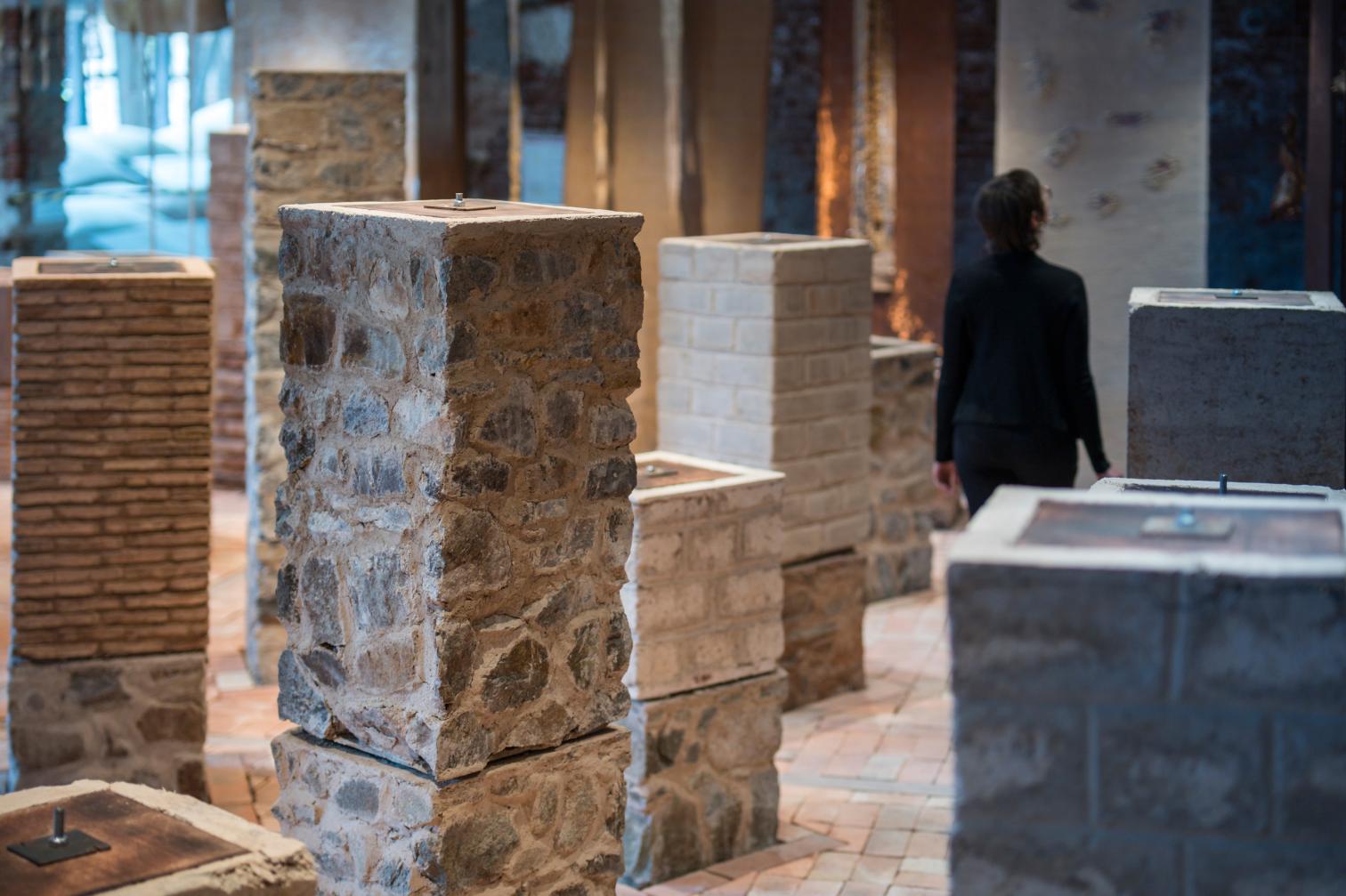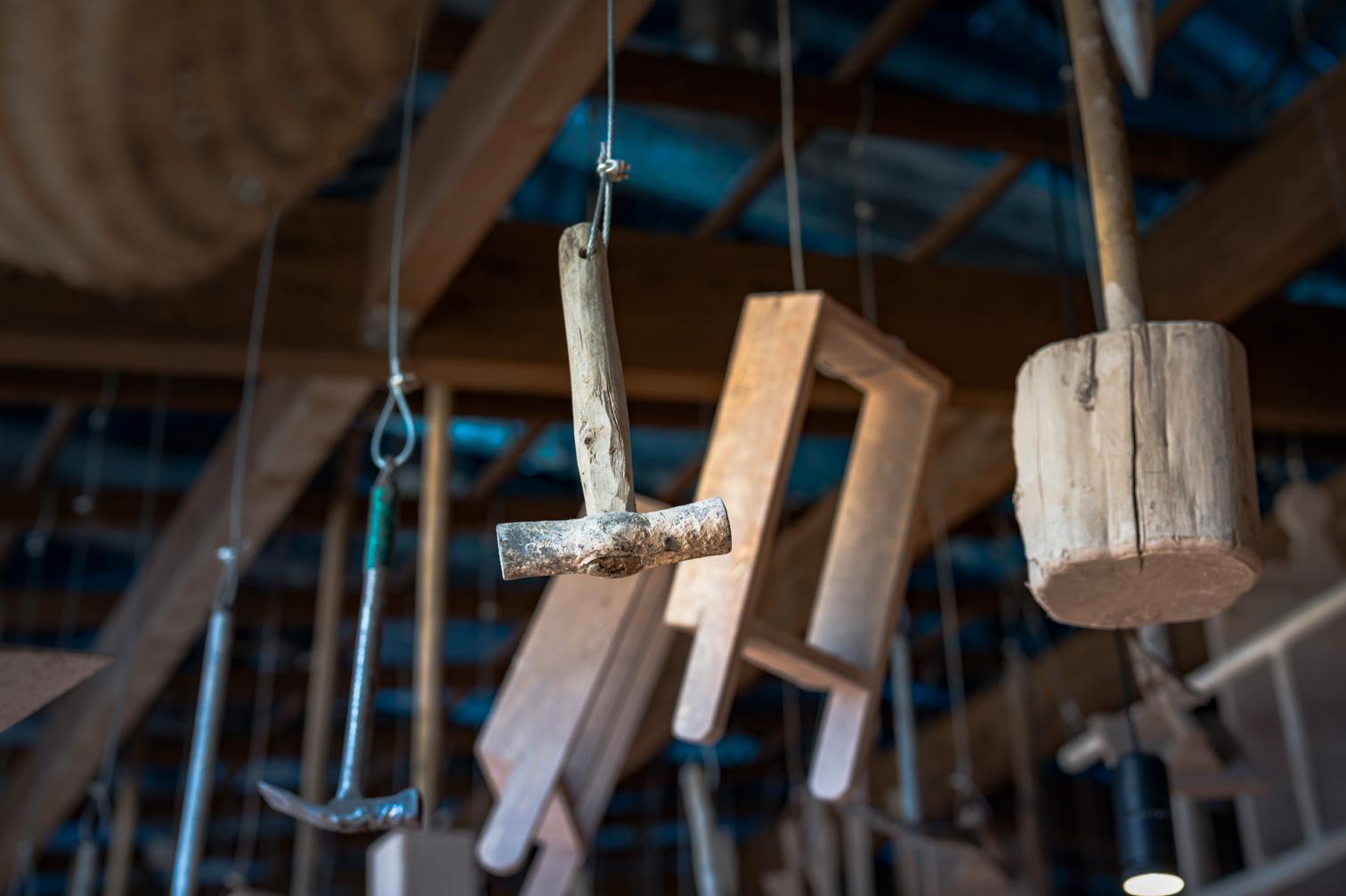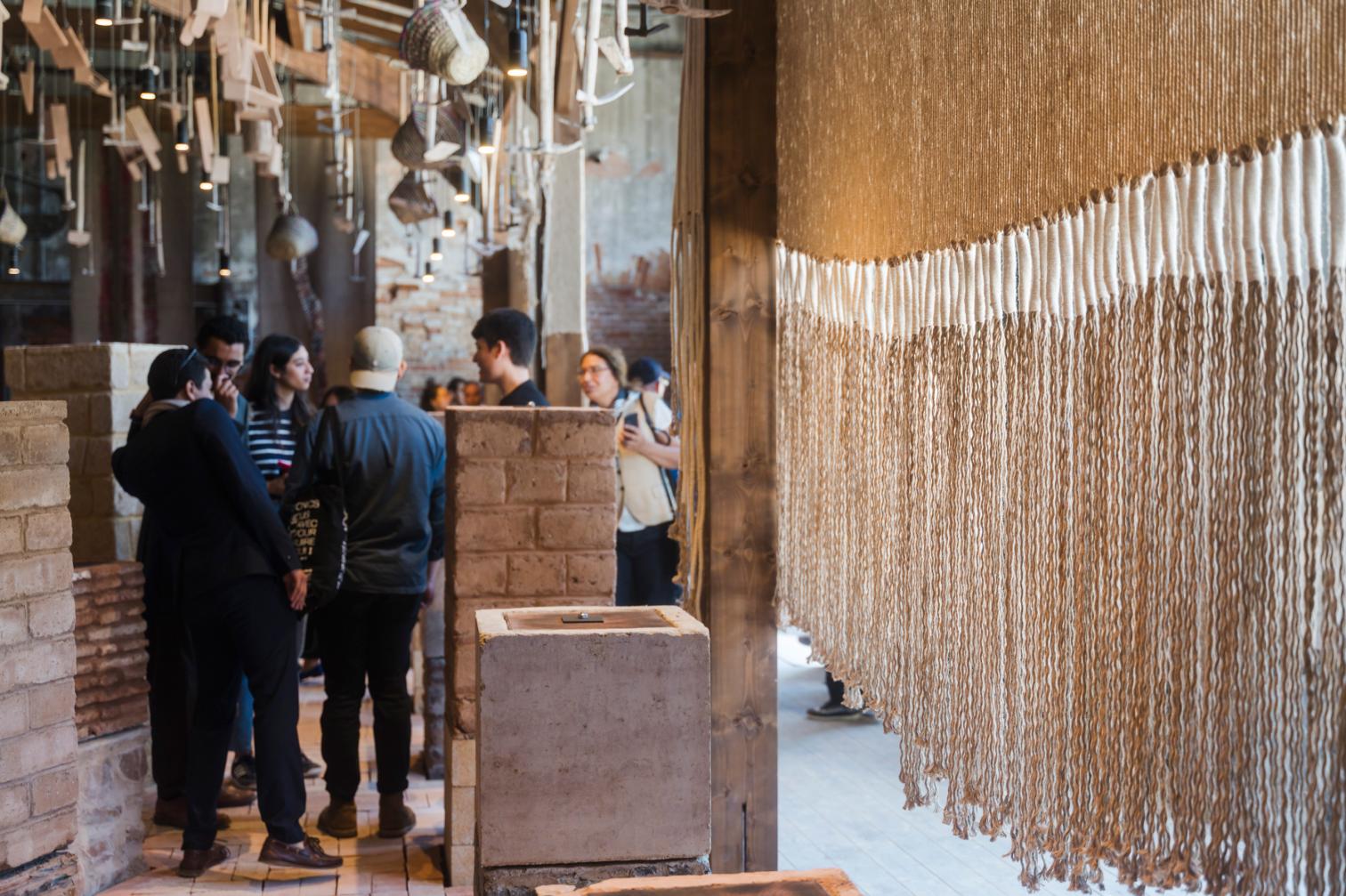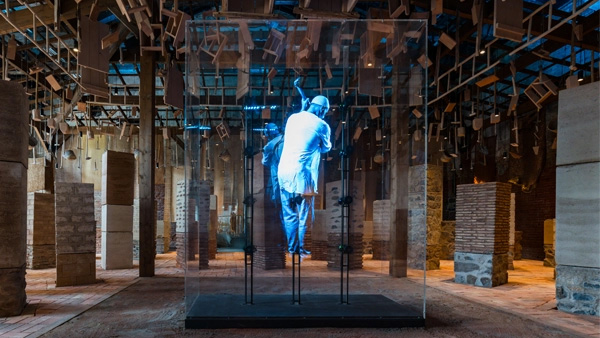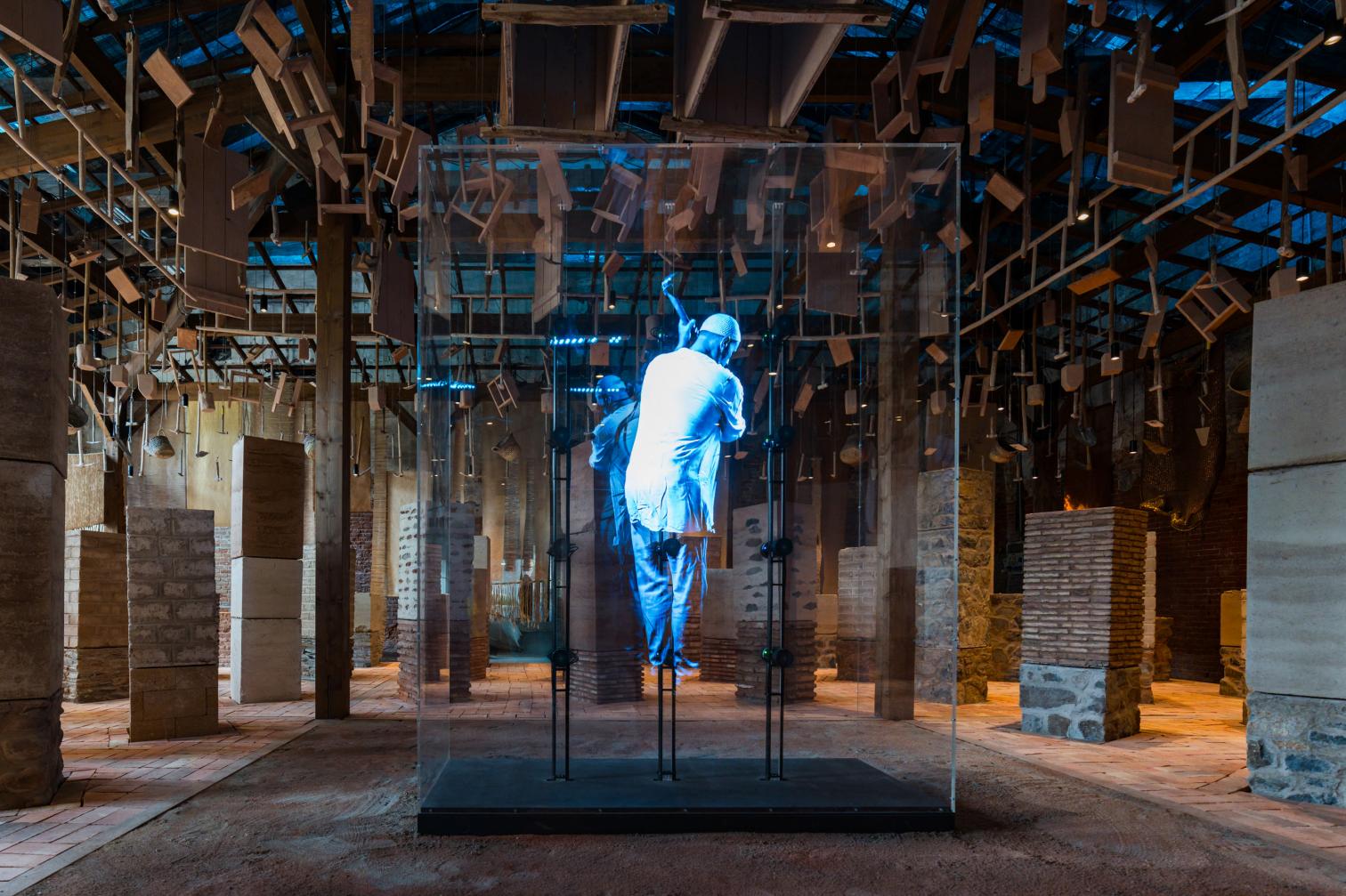
Waters rise, temperaturas increase, and natural catastrophies keep happening, laying bare our incapacity to take care of the environment and showing that inaction has consequences. In this context of cut-off lows, fires, and extreme droughts, it seemed that Carlo Ratti’s clamor for intelligence – natural, artificial, or collective – and his call to take architecture as a tool for adapting to an uncertain future were pertinent. However, after the impact of the first interventions, which empirically illustrate the effects of the crisis, the walk across the Corderie generally exudes a smug optimism and a blind faith in technology. Not until a left turn from the long corridor, leaving behind the overwhelming curated section, does it dawn upon one that the solution may be much simpler than that which we literally have in our hands.
There three pavilions – Morocco, Bahrein, Oman – proudly hoist their cultural treasures and harness their experience in battling the hostile climate of the desert, this time managing to give intelligent answers to some of those problems. If in the Gulf countries remedies center on clever reinterpretations of traditional types, it is in the Atlas land that there is an exceptional confidence in the vernacular as a means through which to build a more sustainable future. In that threshold between past and future, two young curators – Khalil Morad El Ghilali and El Mehdi Belyasmine – confirm that the modern dichotomy that set traditional crafts in confrontation with industry has been surpassed, and demonstrate that technology can shine as much in things assembled by a machine as in those made with our own hands.
All this is achieved without succumbing to romantic gazes or nostalgic reminiscences, but through a fertile exchange between inherited popular techniques and digital means, applied in this case to construction with earth: a universal system that has defined Moroccan building for centuries, but which for a couple of decades now has seen a promising resurgence, thanks to earth’s undeniable hygrothermal properties and high recyclability. At the end of the day, few materials can be reused perpetually, close their life cycle returning to their origin, or simply be close at hand.
Besides exalting the virtues of a building technique, ‘Materiae Palimpsest’ is an invitation to reflect on the limits of progress and the need to preserve the wisdom accumulated in the course of generations. This shines through in every one of the elements that make up the pavilion: from the veil wrapped around it, crafted by the artist Soumiya Jalal using traditional spinning skills, to the forest of columns, raised through the superposition, by layers, of different local ways of working the land, or the canopy made of work utensils hung beyond the reach of our hands.
The voice of experience is even more explicit in the central agora, where a sophisticated hologram paradoxically shows experts explaining their ancestral work procedures. As the curators stress, for these occupations to endure, it is essential that the chain of knowledge transmission never breaks: if we now know of the Almohad technique of erecting earth structures that withstand earthquakes, it is because that knowledge has been passed down to us through generations, from hand to hand.
In a discipline drowning amid efficient post-human workers and insuperable AI systems, we can be glad about a project believing that there is no greater commitment than that of artisans to the environment, and that to think up the future it is perhaps necessary to soil our hands.
